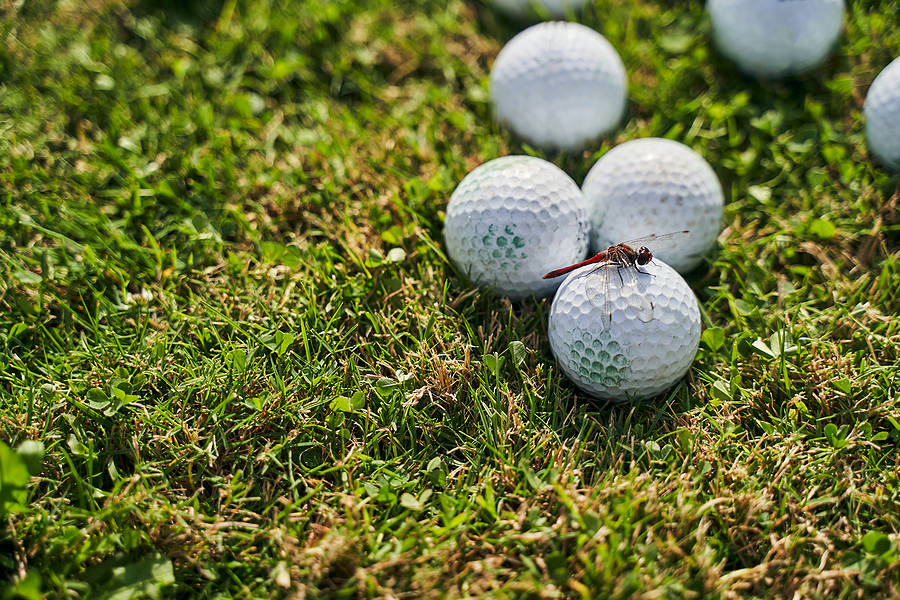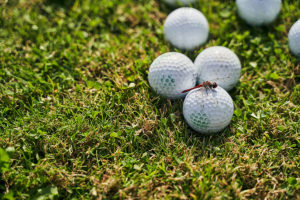
23 Apr Golf Course Pests to Watch Out For
 With their lush greens and varied plantings, naturally golf courses are an attractant to insects of all kinds. Which is great—Insects do a lot for a golf course. They pollinate the flowering plants, keep troublesome insects in check, and they are important decomposers. Though some are welcome additions to your course for the benefits they bring, others arrive without an invitation, wreaking havoc across your turfgrass, presenting one of the toughest challenges golf course supers face: dealing with pests.
With their lush greens and varied plantings, naturally golf courses are an attractant to insects of all kinds. Which is great—Insects do a lot for a golf course. They pollinate the flowering plants, keep troublesome insects in check, and they are important decomposers. Though some are welcome additions to your course for the benefits they bring, others arrive without an invitation, wreaking havoc across your turfgrass, presenting one of the toughest challenges golf course supers face: dealing with pests.
Protect Your Turfgrass
Though the majority of insects are just a nuisance when they’re buzzing around a player’s head, there are some pests that golf course supers really need to watch out for because of the damage they can do. Here are three pests that love trashing turf:
White Grubs: These are your number one enemy as they are the most destructive insects to turfgrass. White grubs are the larvae of a variety of beetles (including masked chafers, May/June beetles, and Japanese beetles). They feed below the soil surface, working quickly, and sometimes taking out root systems and killing the grass entirely. Some indicators that grubs are at work include signs of wilted grass and brown turf patches. Also, if the turf lifts easily or skunks and moles are feeding regularly in a particular area, you may find grubs underneath!
Chinch Bug: If you see yellow, straw-like patches appear in your turf, these small critters could be at work. They can also do some serious damage, killing the grass in such a way that it can take a long time for the turf to grow back. They also thrive in humidity, laying eggs and multiplying in the turf quickly.
Sod Webworms: Before they transform into a moth in five weeks, sod webworms are in the larvae stage—when they are the most destructive to turfgrass. These worms eat the grass and stems. They leave tunnels under the turf and brown patches behind. Plus, birds and animals like digging for them so you’ll have that kind of turf damage to contend with as well.
Protect Your Trees
Though we can all agree that turf protection is the number one priority, guarding your trees is a close second. You’ll want to watch for these pests because if they aren’t controlled, your trees will be coming down.
Borers: These are the most damaging of tree insects. They feed inside trees, killing the roots, and since they’re inside, it’s often hard to tell they’re inside until too late. Emerald ash borers are one of the most commonly feared borers, attacking all kinds of ash trees and killing them quickly. Bronze birch borers and Zimmerman pine moths are also troublesome. To know if borers are present, look for small holes in the tree, thinning, yellow leaves, and bark and canopy loss.
Suckers: These stinkers love sap and plant juices, feeding from the outside. Whiteflies are a common culprit, hiding under leaves, but spider mites are also difficult to deal with. Though they don’t commonly kill a tree entirely, they can absolutely hinder a tree’s growth and cause leaf drop.
Pests Be Gone!
Regardless of the type of pest, early detection is the key to control. It’s smart to have a regular and thorough monitoring program in place to catch problems early on. It’s common for most courses to spray pesticides to control these matters. And often that will suffice if it’s applied preventively and regularly. But it’s the courses that only apply them to cure a problem that face regular pest visits. If you discover turf damage from any one of these pests, Soil & Water Consulting can help. We have years of experience in disease recognition and analysis, and would be happy to develop a plan to strengthen your turf.


